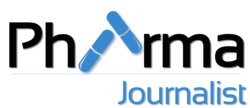Novartis announces FDA filing acceptance and Priority Review of brolucizumab (RTH258) for patients with wet AMD
Novartis announced that the US Food and Drug Administration (FDA) accepted the company’s Biologics License Application (BLA) for brolucizumab (RTH258) for the treatment of wet age-related macular degeneration (AMD), also known as neovascular AMD, or nAMD. Seeking to make brolucizumab available as quickly as possible, Novartis used a priority review voucher to expedite FDA review. If approved by the FDA, Novartis anticipates launching brolucizumab by the end of 2019.
Estimates suggest that by 2020, 1.5 to 1.75 million people in the US will be living with wet AMD, a leading cause of blindness worldwide and a rapidly growing public health concern. As the disease progresses, patients may experience loss of central vision, resulting in an inability to complete daily tasks. Without treatment, vision can rapidly deteriorate and may lead to blindness.
“Reaching this milestone is an important step in our efforts to reimagine the treatment journey for people with wet AMD and their caregivers,” said Fabrice Chouraqui, President, Novartis Pharmaceuticals Corporation. “We are looking forward to the potential of a new option for patients with wet AMD, who often have to navigate considerable physical and emotional difficulties caused by deteriorating vision.”
The regulatory application is primarily based on Phase III data from the HAWK and HARRIER trials – prospective, randomized, double-masked multi-center studies. The primary endpoint of these studies was non-inferiority to aflibercept in mean change in best-corrected visual acuity (BCVA) from baseline to week 48 (mean change in BCVA of 6.6 letters for brolucizumab 6 mg versus 6.8 letters for aflibercept in HAWK and 6.9 letters versus 7.6 letters, respectively, in HARRIER). HAWK and HARRIER are the first and only global head-to-head trials in patients with wet AMD that prospectively demonstrated efficacy at week 48 starting with a 12-week dosing regimen.
Additionally, at week 48 in the studies, key secondary endpoint assessments showed significantly fewer brolucizumab patients with disease activity (23.5% of brolucizumab 6 mg patients versus 33.5% of aflibercept patients in HAWK, and 21.9% versus 31.4%, respectively, in HARRIER (P=0.0022 for both) as well as retinal fluid – key markers used by physicians to help guide management of the disease in clinical practice (31% fewer patients on brolucizumab 6 mg had intra-retinal fluid (IRF) and/or sub-retinal fluid (SRF) in HAWK, and 26% fewer in HARRIER, versus aflibercept (P<0.0001 for both).
“Wet AMD robs people of their precious sight and takes a major toll on the lives of millions of people who face not only vision loss, but also the burden of frequent injections into their eyes,” said Dawn Prall George, executive director, The Support Sight Foundation. “We are always excited about potential new treatment options and hopeful they may help people manage this devastating disease.”

